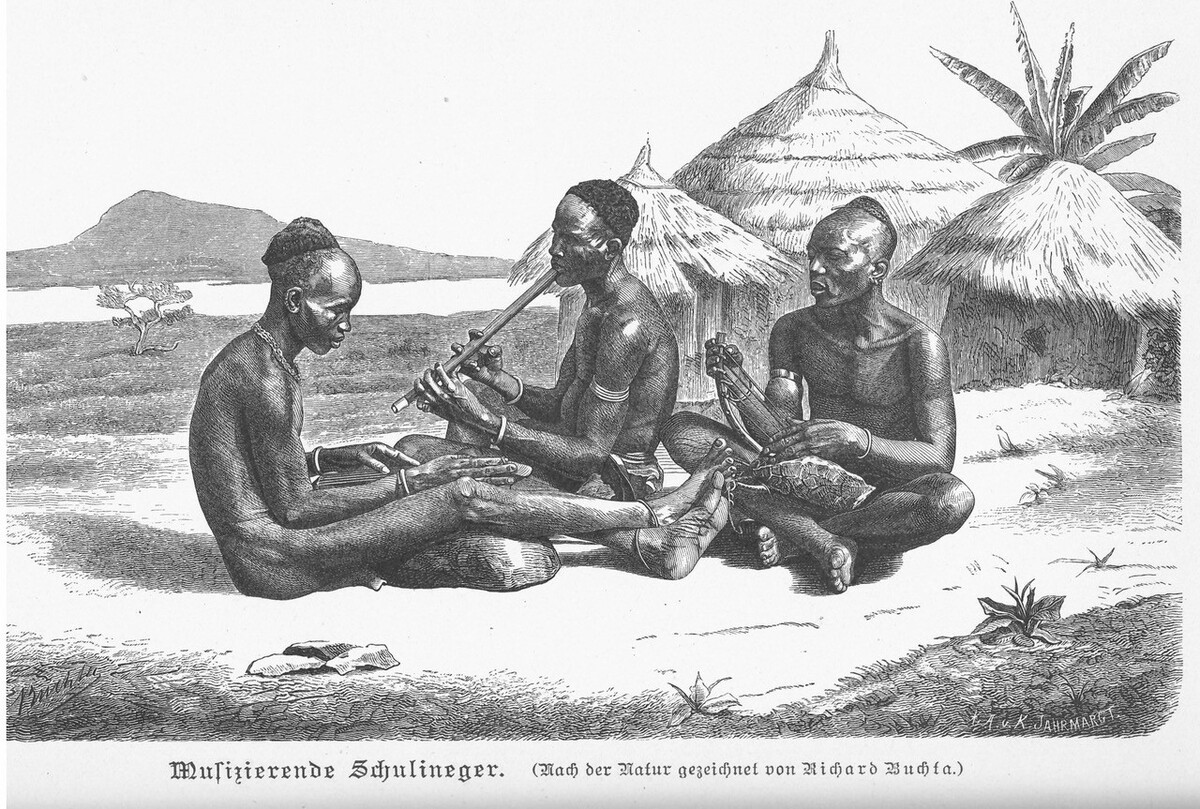Source

Source: Friedrich Ratzel, Völkerkunde vol. 1, 2nd ed., Leipzig, 1894, p. 268.
(Note: the word used in the title, “Neger,” while originally adopted in the nineteenth century to be a scientific term for Black people, has taken on derogatory connotations in the German language, and should be understood to be offensive.)
This engraving by the artist Karl Jahrmargt is based on a drawing by Richard Buchta, an Austrian explorer who traveled in the Sudan in the 1880s. “Shuli” here is a variation of Acholi, an ethnic group centered in South Sudan and Northern Uganda. The engraving appears in Friedrich Ratzel’s Völkerkunde (translated in English as The History of Mankind), a richly illustrated popular book on ethnography/anthropology, which borrows images from many different sources.
Interestingly, images of Africans saturate Ratzel’s book, just as images of Africa and Africans dominate many other popular books of ethnography in the late nineteenth century. This predominance partly reflects Germany’s scientific and colonial interests in Africa. But Africans were also intriguing among the wider German public in that Africans were seen and described as exotic “primitive peoples” [Naturvölker] as opposed to the “civilized peoples” [Kulturvölker] found in Europe or the Far East.

Source: Friedrich Ratzel, Völkerkunde vol. 1, 2nd ed., Leipzig, 1894, p. 268.